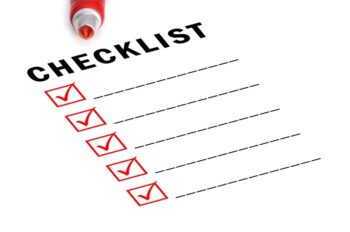Dear Medical Office Manager: I've just been promoted to manager of a medical office. What should I do now to ensure success? Congratulations on your promotion! Here are three steps you can take to ensure success in your new role as a medical office manager: Get to know your team: Take the time to meet and build relationships with your staff. This will help you … [Read more...] about 3 steps to success for a new medical office manager
Managing the office
Make everyone welcome by improving accessibility and inclusivity in your medical office
Creating an accessible and inclusive medical practice is essential for providing high-quality care to all patients, regardless of their abilities or backgrounds. As a medical office manager, you play a crucial role in ensuring that your practice is welcoming and accommodating to everyone. Here are some practical steps you can take to improve accessibility and inclusivity in … [Read more...] about Make everyone welcome by improving accessibility and inclusivity in your medical office
Daily operations checklist for a medical office manager
By following this checklist, you can enhance patient satisfaction, support your team effectively, and create a professional and welcoming environment. Here's a detailed look at the key tasks you should focus on each day to keep your medical office running like a well-oiled machine. Verify Appointment Schedule and Ensure All Appointments Are Confirmed: Review the day's … [Read more...] about Daily operations checklist for a medical office manager
Getting your head back in the game after summer vacation
It can be hard to come back to the office after the fun and relaxation of summer vacation. Consider these tips for a smooth transition and an efficient workflow. Reconnect with the Healthcare Team: Upon your return, schedule meetings with key healthcare professionals and staff members. Discuss any recent changes, updates, or challenges that occurred during your absence. … [Read more...] about Getting your head back in the game after summer vacation
10 steps to build your confidence as a new office manager
Starting a new role as an office manager can be an exciting yet challenging experience. It's not uncommon to feel a bit overwhelmed in the beginning, but by taking proactive steps, you can build your confidence and excel in your new position. Here are some valuable tips to help you grow in your role as an office manager: 1. Understand Your Role: Begin by thoroughly … [Read more...] about 10 steps to build your confidence as a new office manager
Effective inventory management for your medical office
Effective inventory management ensures that you have the right supplies when you need them without overstocking and wasting valuable resources. Here's how you can streamline your inventory management and keep everything running like a well-oiled machine. First things first, get organized. Start by taking a comprehensive inventory of all your medical supplies, from syringes … [Read more...] about Effective inventory management for your medical office
Mastering Modern MedTech: Essential tech skills for every medical office manager
To stay ahead and keep your practice running smoothly, it's crucial to develop a robust set of technology proficiencies. From Electronic Health Records (EHR) systems to cybersecurity practices, mastering these tools not only enhances operational efficiency but also ensures compliance, improves patient care, and supports the overall success of your practice. Dive into the … [Read more...] about Mastering Modern MedTech: Essential tech skills for every medical office manager
5 ways managers can better communicate with staff
By Nick Hernandez bio Effective medical office managers are effective communicators. They express themselves well both orally and in writing. Further, they project an image of self-assurance and of understanding. These attributes are continuously communicated by their actions and demeanor. Effective communication is also important because a large portion of a manager's … [Read more...] about 5 ways managers can better communicate with staff
18 great ideas to make you a better manager
Here are 18 good ideas that can be of value to any manager. 1 Reduce the interruptions. During busy times, move the chair around so your back is to the door. People hesitate to interrupt when they can’t make immediate eye contact with the manager. Stand up when people come in and stay standing. As long as the manager is standing, the visitor won’t start up a long … [Read more...] about 18 great ideas to make you a better manager
How to navigate insurance contracts
Reviewing and negotiating insurance contracts and ensuring compliance with regulations are indispensable tasks for medical office managers. These efforts not only impact the financial stability of the practice but also contribute to the quality of patient care. By approaching these strategically, medical office managers can secure favorable terms, optimize provider networks, … [Read more...] about How to navigate insurance contracts









